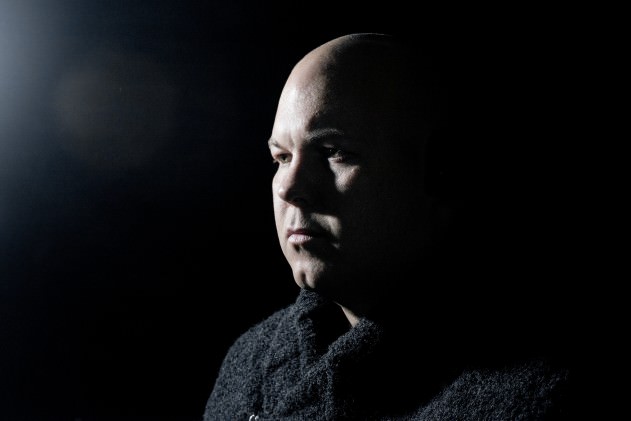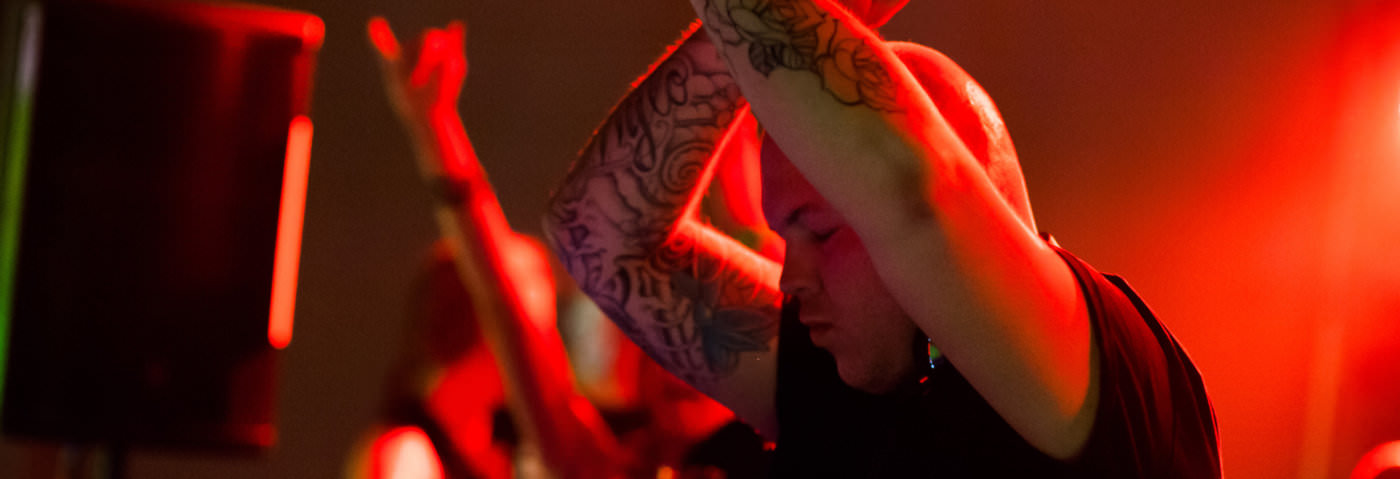Alan Fitzpatrick talks to Attack’s Kristan Caryl about his early rave experiences, the importance of branding in techno, and his prolific work rate.

Alan Fitzpatrick is a modern-day techno heavyweight. From his base on the south coast of England he has been turning out consistently big tracks at a consistently high rate for years. His output is tough, fulsome and no-frills stuff that pumps out high-pressure rhythms on labels such as Drumcode, Hotflush and Cocoon, but he has also recently started a new label entitled Whistleblower. It’s a joint project between the Southampton man, Rhymos and Reset Robot (aka Robertson) and got off to a fine start back in February with the High Notes EP.
On the cusp of releasing yet another bit of dancefloor dynamite, this time on Steve O’Sullivan’s cultured Mosaic Red label, we chat to big man Alan about his roots, his grooves and his indefatigable rate of release.
Attack: How did you first get into techno and why has it remained an obsession for so long, do you think?
Alan Fitzpatrick: It first started for me when I began going to clubs when I was 17, but the fact of the matter is back then I was so into the experience of going to raves that details like who the DJ was or what music was going to be played wasn’t really the first consideration. It was simply about partying with my mates and enjoying this totally new and exciting experience. I’d mainly go to Slinky in Bournemouth where they’d have all sorts of DJs playing from right across the dance music genre, but I caught the techno bug from guys like Carl Cox and Jim Masters who played this very energetic, rave-influenced UK style of techno which I really liked. It had a familiarity about the sounds but presented in a new way and I found that really resonated with me. It sounded cool but still fun. We’d occasionally be more adventurous though and go to these raves in Portsmouth which had guys like Chris Liberator and Dave The Drummer playing a more European sound that was more underground and all about acid lines and really sick percussion.
So my introduction to techno was a bit of a baptism of fire with quite a range of styles thrown into the mix, but that was totally normal for me as I grew up listening to tape packs which would maybe have four cassettes with a jungle mix, a hardcore mix, an acid house mix and a techno mix. The rigid categorisation of styles that has become part and parcel of the scene nowadays just didn’t apply as strongly back then. It was all newer and I think that made people more open-minded. It was very normal to listen to all these different styles. It didn’t take me long to want to get deeper into the scene and this really happened by going record shopping and buying decks so I could mix at home. Hands On Records in Portsmouth was where I’d go the most. That’s where I first got into collecting tunes and hunting out tracks I’d heard at the weekend or new releases from artists and labels I liked. This was when I fell in love with the whole process of discovering new music.
I caught the techno bug from guys like Carl Cox and Jim Masters who played this very energetic, rave-influenced UK style of techno which I really liked
Looking back on that time now, these sound like really obvious choices, but DJ Misjah’s ‘Access’ and Dave Clarke’s ‘Red 2’ were two very influential records for me. ‘Access’ in particular. I played that to death! Also, labels such as Stay Up Forever, Hydraulix, Pounding Grooves and Drumcode made up most of my record collection. My taste was always for the very driving, rhythmical beats and tracks that had something of an otherworldly feel to them. Music you could get lost in. That carried you away to a different place, whether you were on drugs at the time or not. I guess that’s quite a primal thing. You know, the old thing about how when beats are up around the 130bpm mark they become in tune with your heartbeat and that taps into some kind of subconscious tribal thing that humans have locked away inside us from when we were all cavemen, dancing around fires, celebrating achievements or successes. It’s just the same as now really, isn’t it?
What made you stick to mainly releasing under your own name?
I’ve always been pretty serious and ambitious about making at least some sort of career out of making music. Even if I didn’t make money from writing or performing I always wanted to be successful and leave something of a legacy. Of course I never imagined I would get the chance to DJ professionally and all that stuff, but once I had learnt enough about how the scene worked and what it took to be successful in the music industry I definitely had the feeling that I wanted to build a profile that could be something substantial. Also, around the same time I had refined the sound of the music I was writing into something that I felt strongly represented me and my tastes. By going into it with that attitude it made sense to me to write and perform under my own name. I wanted people to know that the music I was making was by me. I wanted to be recognisable and not to hide behind an artist name or whatever.
It sounds quite calculating I guess, but I think you need a bit of that attitude to be successful. Even in the creative industries. It’s a business, even if I try really hard to only ever write music for fun and block out all the other factors. How you present yourself and how that then enables you to market yourself is an important part of developing a profile as an artist.

08.55 AM
Love 🙂
03.46 PM
Great read. Alan has such a down to earth creative style.